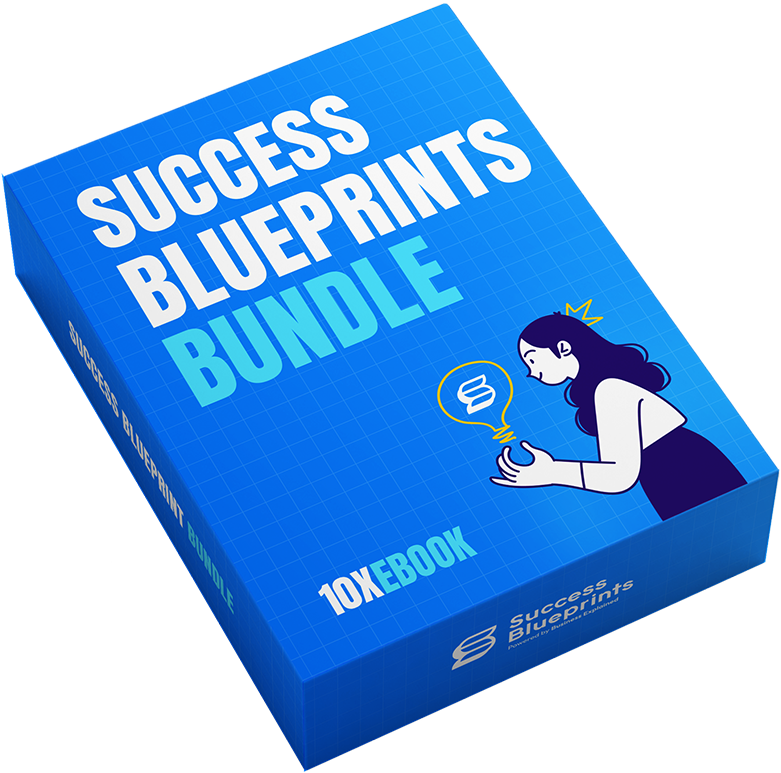Table of Contents
In today’s competitive business landscape, companies need to strategically allocate resources, focus their marketing efforts, and cater to specific customer needs to stay ahead. Industrial market segmentation is a powerful tool that enables companies operating in the business-to-business (B2B) sector to break down their market into manageable, distinct groups with similar characteristics, needs, or purchasing behaviors.
This approach is crucial for identifying key areas of growth and targeting the right businesses with relevant products and services. By recognizing and addressing the unique requirements of each segment, companies can enhance efficiency, improve customer satisfaction, and foster long-term relationships.
In the following text, we’ll explore what industrial market segmentation is, why it’s essential, and how businesses can implement it to optimize marketing strategies, improve resource allocation, and boost overall performance.
What is Industrial Market Segmentation?
Definition and Importance
Industrial market segmentation is the process of dividing a business-to-business (B2B) market into distinct subgroups with unique needs, characteristics, or behaviors. Unlike consumer segmentation, which focuses on individual demographics, industrial segmentation is categorized based on business operations, industry type, and organizational needs.
This segmentation helps companies effectively target, market to, and serve specific groups within a larger market, ultimately improving resource allocation, optimizing marketing strategies, and enhancing product development efforts.
Key Benefits
Segmenting industrial markets allows companies to customize their marketing and sales efforts, create targeted advertising campaigns, and tailor products to specific segments. With the right segmentation, B2B marketers can improve customer acquisition and retention while minimizing costs.
Differentiating from Consumer Market Segmentation
The criteria in industrial market segmentation, such as company size, industry, geographic location, and purchasing power, differ from consumer segmentation due to the B2B focus on group needs rather than individual preferences. Unlike consumer segmentation, which might use lifestyle or personal income as a basis, industrial market segmentation focuses on business-specific needs and purchase behaviors.
What are the Factors Affecting Industrial Market Segmentation
There are a lot of factors that navigate the process of industrial market segmentation shaping the success of the segmentation strategy. Here we will cite the most critical ones.
Industry Characteristics
The nature of the industry plays a crucial role in determining segmentation strategies. For example, companies in the manufacturing sector may have different requirements than those in the technology or healthcare sectors. Industry trends, competitive pressures, and regulatory requirements also influence segmentation..
Company Size
Larger corporations have different buying patterns, budgets, and operational needs than small or medium-sized enterprises (SMEs). Therefore, segmenting based on company size enables a tailored approach to various client segments, ensuring that marketing and product strategies align with the purchasing power and preferences of each size category.
Geographic Location
Geographic segmentation is another significant factor, particularly for industries where logistical considerations and regional regulations are paramount. A company in Europe, for example, may have different needs than one in North America due to regulatory standards or cost structures in shipping and handling.
Product Usage and Purchase Behavior
Understanding how different companies use a product or service can further aid segmentation. For instance, a heavy industrial client might prioritize durability, while a small enterprise may focus on cost-efficiency. Studying purchase history, frequency, and average order value allows marketers to identify high-value customers and optimize their offerings accordingly. Based on this you can also create a successful tailored marketing strategy.
Technological Maturity
Companies vary in technological sophistication, affecting how they integrate new products or systems. Segmenting based on tech adoption allows firms to address the diverse technological needs of clients more effectively, ensuring that companies targeting highly digitized firms emphasize innovation and scalability.
How to Segment Industrial Markets – Strategy for Maximum Success
#1 Define Clear Goals and Objectives
Setting precise objectives is essential for successful segmentation. Determine what you aim to achieve—whether it’s improving market reach, boosting sales, or enhancing customer satisfaction. Clearly defined goals guide the segmentation process and ensure alignment with overarching business strategies.
#2 Gather Data and Conduct Market Research
Collect both quantitative and qualitative data to understand potential market segments better. Surveys, interviews, and client purchase data are valuable resources. Leverage customer relationship management (CRM) systems and data analytics tools to build a clear picture of your customer base. The more detailed the data, the more effective the segmentation. More about market research you can read in our e-book analyzing this topic in detail, called Marketing Research Explained.
#3 Identify Key Segmentation Criteria
Select segmentation criteria that are relevant to your product and target market. These criteria could include industry type, company size, geographic location, or purchase behavior. The choice of segmentation criteria significantly impacts the effectiveness of a company’s market strategy and customer satisfaction rates.
#4 Implement Segment-Specific Strategies
Once segments are identified, tailor marketing and product strategies to meet the unique needs of each segment. This could involve personalized communication, customized product features, or unique pricing structures.
#5 Monitor and Adjust Segmentation Strategy
Market conditions and customer needs are always evolving, so it’s essential to monitor segment performance continuously. Regularly review customer feedback, industry trends, and sales metrics to adapt your strategy. Companies that frequently revisit and update their segmentation strategies achieve higher growth rates compared to those that maintain static segmentation.

Types of Industrial Market Segmentation
Geographic Segmentation
This type of segmentation focuses on regional or geographic differences in customer needs. It is especially relevant for businesses with logistical constraints or those needing to comply with local regulations. Examples include dividing markets by country, region, or even specific cities.
Demographic Segmentation
In B2B markets, demographics often refer to company size, industry type, and turnover rates rather than personal attributes. Demographic segmentation allows businesses to tailor their offerings to companies based on these corporate characteristics, aligning marketing strategies with the needs of specific business profiles.
Firmographic Segmentation
Firmographic segmentation is similar to demographic segmentation but focuses on characteristics like company structure, revenue, and operational scale. This segmentation approach allows companies to create targeted messages for businesses with similar profiles, leading to higher conversion rates.
Behavioral Segmentation
Behavioral segmentation is based on how clients interact with a product or service, including purchase frequency, product usage, and loyalty. This segmentation type is particularly effective in identifying and rewarding high-value customers, ultimately boosting client retention and satisfaction.
Technographic Segmentation
This approach divides markets based on technology adoption and usage levels. Technographic segmentation is popular in sectors like IT and telecommunications, where product offerings often depend on a client’s technological maturity and infrastructure capabilities. Learn more about technology usage in the business world by reading some of technology e-books from our offer.
Psychographic Segmentation
Although less common in B2B contexts, psychographic segmentation considers company culture, values, and decision-making processes. For example, a sustainability-focused firm may segment clients based on their commitment to environmental practices.
Industrial Market Segmentation Examples
Many real-life examples showcase how companies across industries leverage industrial market segmentation to optimize their product offerings, cater to customer needs, and improve overall efficiency.
Geographic Segmentation: Caterpillar Inc.
Caterpillar Inc., a global leader in construction and mining equipment, segments its market geographically to tailor its offerings according to regional needs. Recognizing that clients across different regions face unique challenges—such as terrain, climate, and regulatory environments—Caterpillar adapts its products and services to fit these localized requirements. For instance, the company offers machinery with specifications and adaptations for high-altitude operations in South America or sand-resistant engines for the Middle East. By localizing products, Caterpillar increases operational efficiency, reduces supply chain complexities, and meets the precise needs of clients worldwide.
Industry Vertical Segmentation: IBM
IBM serves as a prime example of industry-based segmentation. As a leading provider of technology and consulting services, IBM segments its market by industries, including banking, healthcare, government, and education. Each segment has unique needs and regulatory requirements, so IBM tailors its software, hardware, and cloud solutions accordingly. For example, IBM offers banking-specific data analytics and fraud detection software, while in the healthcare sector, it provides data security solutions that comply with HIPAA regulations. This industry-focused segmentation enables IBM to address specific business challenges and regulatory needs, which in turn helps foster long-term partnerships with clients.
Customer Size and Scale Segmentation: Salesforce
Salesforce, a major customer relationship management (CRM) platform, segments its customers by size—small businesses, mid-market companies, and large enterprises. Salesforce offers distinct CRM packages, service levels, and support systems tailored to the varying needs of each size segment. For instance, Salesforce Essentials is designed for small businesses and comes with essential CRM features at a lower cost. Meanwhile, larger enterprises can opt for the Salesforce Enterprise or Unlimited editions, which provide extensive customization options, advanced analytics, and dedicated support. By scaling its offerings based on customer size, Salesforce maximizes its reach and ensures each segment receives the appropriate tools and resources.
Purchase Behavior Segmentation: Grainger
Grainger, a supplier of industrial and safety equipment, segments its market based on purchase behavior. Recognizing that some customers make regular high-volume purchases while others buy occasionally or in smaller amounts, Grainger offers targeted pricing and loyalty programs to meet each group’s needs. High-frequency buyers benefit from discounts, bulk pricing, and customized inventory management, while lower-volume clients may receive personalized recommendations and easier access to smaller, on-demand purchases. By tailoring its approach to different purchasing behaviors, Grainger effectively boosts customer retention and encourages increased spending from high-value customers.
Technological Adoption Segmentation: Microsoft Azure
Microsoft Azure, Microsoft’s cloud computing service, segments its market by clients’ technological maturity. It offers flexible, scalable cloud solutions for businesses across the tech spectrum, from startups needing basic infrastructure to enterprises seeking advanced analytics and artificial intelligence capabilities. For example, Microsoft’s “Azure for Startups” provides budget-friendly cloud solutions with mentorship for smaller tech companies, while “Azure Government” meets the advanced security and compliance requirements of governmental organizations. This technographic segmentation approach allows Microsoft to serve a diverse clientele and ensure each segment can leverage Azure according to its capabilities and needs.
Industrial market segmentation is a powerful tool for B2B companies, enabling them to effectively reach diverse client segments and meet varying customer needs. By applying strategies grounded in detailed market research, businesses can achieve deeper market penetration, improve customer satisfaction, and gain a competitive edge.


 Risk-free Purchase: Full refund within 14 days
Risk-free Purchase: Full refund within 14 days



